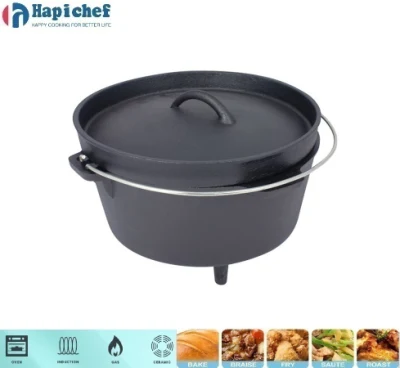Factories Producing Enameled Cast Iron Cookware for Culinary Enthusiasts and Home Chefs
The Art of Enameled Cast Iron Pots and Pans A Journey Through Factories
Enameled cast iron pots and pans have gained a prominent place in kitchens around the world, celebrated for their durability, versatility, and vibrant colors. These culinary tools are perfect for a variety of cooking methods, including sautéing, simmering, baking, and even frying. The journey of these beloved cookware items begins in specialized factories where craftsmanship meets modern technology.
The process of creating enameled cast iron cookware is intricate and requires a skilled workforce. It starts with the selection of high-quality cast iron. Factories often source iron from specific regions to ensure uniformity and strength. Once the raw iron is procured, it undergoes a melting process at high temperatures, where it is poured into molds to create various shapes of pots and pans.
After the casting process, the individual pieces are cooled and cleaned. This is a crucial step because any imperfections may affect the final finish of the enamel. At this stage, workers carefully inspect each item, discarding any pieces that do not meet stringent quality standards. This meticulous attention to detail sets the foundation for superior cookware.
Once the cleaning is complete, the enameled process begins. Factories use a special mixture of glass and other materials that are melted down to create a durable, non-reactive coating. The cast iron pieces are coated by hand or machine, ensuring an even layer of enamel. This process not only provides an aesthetically pleasing finish but also prevents rust and enhances the longevity of the cookware. Color options range from bright, lively hues to more subdued tones, catering to diverse consumer preferences.
The enameled pots and pans then undergo a high-temperature firing process. This step is crucial as it solidifies the enamel coating and bonds it to the cast iron, creating a robust, heat-resistant surface that can withstand the rigors of daily cooking. Factories typically have sophisticated kilns designed for this purpose, with precise temperature controls to achieve optimal results. The skill and attention of the factory workers during this phase can significantly influence the quality of the final product.
enameled cast iron pots and pans factories

After firing, the cookware is again inspected for quality. This final inspection checks for any defects in the enamel, ensuring that the cookware not only looks good but is also functional and safe for cooking. Any pieces that do not pass inspection are removed from the batch, ensuring only the best products reach consumers.
Packaging is the final phase in the production process. This involves carefully wrapping the enameled cookware to prevent any damage during shipping. Brands often take pride in their packaging, as it reflects their commitment to quality and care for the customer experience. Once packaged, the products are distributed to retailers and eventually to home kitchens worldwide.
The allure of enameled cast iron cookware extends beyond its functionality. It has become a symbol of culinary heritage, representing the traditions passed down through generations. Many top chefs and cooking enthusiasts swear by these pots and pans, valuing their ability to retain heat and provide even cooking temperatures.
Moreover, the rise in eco-conscious consumerism has prompted many factories to adopt sustainable practices. Some are even incorporating recycled materials into their manufacturing processes, aligning with the values of the modern consumer who seeks durable, sustainable kitchenware.
In conclusion, the factories producing enameled cast iron pots and pans play a vital role in bringing this kitchen staple to life. From the selection of raw materials to the meticulous crafting and firing processes, every step requires precision and passion. As these timeless pieces find their way into homes, they carry with them a legacy of craftsmanship and a commitment to quality that continues to delight cooks of all levels. Whether it's a professional chef or a home cook, enameled cast iron cookware remains a treasured addition to any kitchen, bridging the gap between functionality and artistry.
-
Why Every Kitchen Needs a Casserole Cast Iron DishNewsJun.24,2025
-
Experience the Tradition and Quality of Cast Iron CookwareNewsJun.24,2025
-
Double Sided Cast Iron Grill PanNewsJun.24,2025
-
Cast Iron Dutch Ovens You’ll Actually UseNewsJun.24,2025
-
Buy Cast Iron Griddle for Everyday CookingNewsJun.24,2025
-
Barbecue Iron Grill Cooking PowerNewsJun.24,2025
-
Standard Product Lines from Cast Iron Cookware SuppliersNewsJun.11,2025
